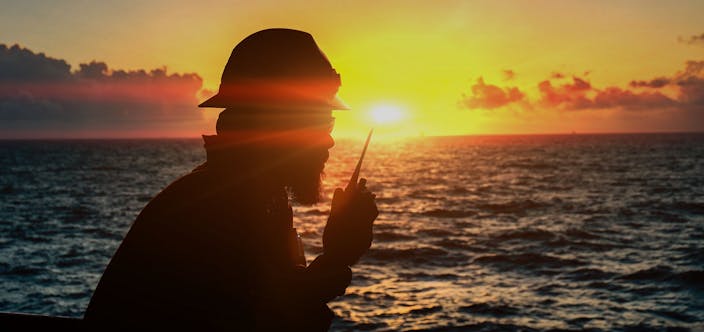Commercial pressure
What is commercial pressure?
Commercial pressure, or production pressure is a top-down process that is caused by external drivers to satisfy customers, achieve profitability, and have operations proceed as efficiently and at as low a cost as possible. Commercial pressure has both a positive and a negative side. Its negative side is short-term thinking and resorting to cutting corners for short-term wins. This short-term strategy is inefficient because of the huge risks it entails. However, there is also a positive side: pressure to keep the operation smooth and efficient in the long term and make time for planning and verify work routines to ensure safety.
Where does the commercial pressure come from?
There is a demanding market for a trustworthy shipping company that delivers in time and this requires good planning. Vessels are navigated through heavy traffic, reduced visibility, and heavy weather by a multitude of electronic navigational aids. The modern connectivity era with satellite communications, has in some cases also prompted micro-management from ashore, in some cases by managers with little or no seagoing experience. While the unlimited connectivity has given us new tools to assist vessels in different operational matters, simultaneously the intense commercial pressures have increased in areas such as timely arrivals, departures, and fuel saving wherever possible.
When the shore organisation only considers minimum time and costs permissible to run the operation – how can we fit in the extra measures that are important for making an economically sustainable operation in the long term? Ships make money at sea – not in berth – but to keep the vessel trading and crew on top of the operation there must be time and costs put aside to plan for measures that ensure safety. The best set of eyes and ears to ensure safety and regulatory compliance for any vessel is its crew, backed up with a supporting shore organisation. To ensure that we have psychological safety in our group, crew must feel confident to speak up when something is a growing risk. Unfortunately, operations often underutilise all the resources available; the crew and shore organisation, when properly aligned with the same plan, run the best and most profitable organisation.
As a shipping company you are exposed to commercial pressure.
When the management and crew are stressed by commercial pressure the risks to shipping operations are high and not under control. This can easily lead to costly claims, repairs and ultimately the organisation’s performance is very ineffective.
The stressors of commercial pressure:
- Work-related stressors (high workload and long working hours, low control of risks)
- High demands from superiors to keep within the time and budget limits, which cause conflicts with compliance with safety routines.
- High-risk operations: accidents and injuries occur when risk is not under control.
When the management and crew are aware of commercial pressure the risks of an operation are monitored and constantly kept under control, which enables the shipping company to make sustainable and long-term profits.
The motivators of commercial pressure:
- Pride in being part of a trustworthy, well-run and attractive shipping company
- Feeling valued for being part of a smooth and sustainable operation
- Having tools and a working environment that make crew thrive and perform to the best of their ability.
How to get the motivators from commercial pressure:
- Have a long-term perspective when calculating the profitability of the company
- Plan the voyages and operations, communicate the plan to all involved and stick to the plan for as long as possible
- Be aware that discovered risks can (and should) take time from the plan. Deviation from the plan needs to be followed up – why did we deviate from the plan? Is it necessary to implement changes in the plan and take the deviation into account?
- Spread awareness about what you value as a company (long-term profitability and safety)
- Take feedback to get an overview of how and where commercial pressure affects your company
- Train and brief on coping strategies to handle commercial pressure
- Develop a strategy to learn from your organisational mistakes. To take control of the risks you must know them – and to know them you must have trust from your crew.
Reducing stressors and risks for the crew:
- minimizing fatigue (a fatigued crew has limited capacity to handle situations that contain pressure)
- improvements in psychological safety onboard (value that your crew speak up when they discover risks)
Make a dedicated plan and have a strategy for how to handle commercial pressure: who should (and should not) be confronted with it and where in the organisation is the best place to manage commercial pressure and mitigate the negative effects. Share the plan with the whole organisation.



